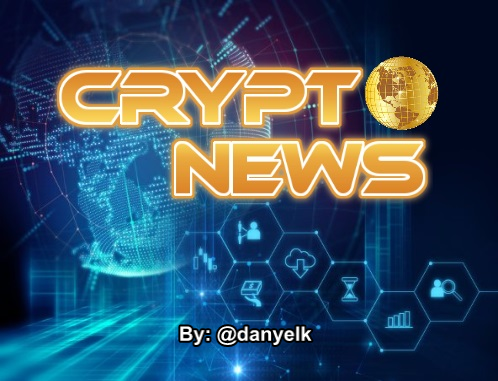Your Crypto News on Steemit November 25, 2017

- The 10 Biggest Myths about Cryptocurrencies - Part 3!
- Bitcoin Gold: How to get your Coins!
- R3 and Microsoft expanding their Partnership!
- SAFT Project and the Regulation of ICOs!
- Masterpayment Cooperation with Crypto Exchange Bitstamp!
- South Korea: Financial Supervisory Service has no Plans to regulate Bitcoin!



In the series "The 10 Biggest Myths About Cryptocurrencies", I'd like to take a closer look at the top 10 claims about cryptocurrencies and their opportunities and risks. In doing so, I will daily explore a new myth and check it for accuracy.
Myth 3: Cryptocurrencies price rises are a pure bubble formation
The bubble formation blame, especially regarding Bitcoin and its development over the past year, has made it important for cryptocurrencies to be heard by many of the influential business leaders and decision-makers in the financial industry. Again and again it is to be heard from this direction, it is a great fraud, which is designed to achieve the highest possible return in a short period of time before the crypto market collapses again.
The loudest was Jamie Dimon, the CEO of JPMorgen, who called the Bitcoin, the figurehead of all cryptocurrencies, publicity as a "fraud" - freely translatable to fraud.
As a speculative bubble in macroeconomics a market situation with unrealistically or disproportionately high prices for a particular good or a particular class of goods called. As a reference, the Dutch tulip bubble in the 17th century or the dot.com bubble of the early 2000s are increasingly being mentioned again. To call bubble formation in the current developments in the crypto market implies that cryptocurrencies are trading well above their fundamentally justified price.
Looking more closely at the price development in the crypto markets, it can not be denied that the tokens traded there show a tendency to steady growth in addition to high volatility - the curves are relatively often upwards in the majority. However, the sometimes steep ascent does not necessarily mean that there is no real value behind the crypto façade.
Rather, the concrete equivalent of cryptocurrencies can not always be precisely determined. In addition, the crypto market is extremely diverse and includes different types of tokens that need to be valued differently. For example, the utility token of a particular platform has an application value resulting from the function of the token in the network in which it is circulating. In addition, it should be remembered that the two largest cryptocurrencies Bitcoin and Ether and the altcoins based on them are deflationary because they have set a maximum number of tokens.
For cryptocurrencies such as Bitcoin, which primarily assume a currency and value preservation function, the value stands or falls with their distribution and use. If Bitcoin is being used by more and more people to pay for goods and services in Bitcoin or as a digital substitute for gold, then its economic relevance also increases. If this mainstream adaptation increases so strongly, a strong price rise is justified, vice versa.
So it can be said about this myth that the price explosion in the markets is sometimes disproportionate and that certain tokens are certainly traded above their intrinsic value. In particular, in the case of the tokens emitted by substance-free ICOs, bubble formation can not be dismissed out of hand. However, it would be wrong to project this bubble formation 1: 1 on Bitcoin and Ethers, since its economics goes far beyond the funding of ICOs.
Also, it must not be forgotten that high production costs (mining) are needed, for example, to generate a bitcoin. An uncontrolled increase in money as in Fiat currency is therefore not possible. Each newly mined Bitcoin starts with production costs of often several thousand euros or US dollars. An initial situation or investment, which is not given with the euro and the US dollar.
The current strong price increases are therefore mainly due to an increased mainstream adaptation and institutional interest. That it comes to exaggeration in one direction or another, is completely normal. In addition to rallies in the future, we will also experience severe price falls in the future. After all, cryptocurrencies are ultimately "just" a new asset class that can protect themselves from greed and panic or blistering and blistering just as little as stocks and other securities.
HERE you can read Part 1
HERE you can read Part 2


Who understands how private keys work, has a clear advantage: Recently, Bitcoin Gold can be traded on some crypto exchanges. Time to think about how to split them off from bitcoins.
After Bitcoin Cash has demonstrated that a spin-off of Bitcoin by a hardfork can work well, Bitcoin Gold is catching up. All credits that were in Bitcoin on the 25th of October are available in principle as Bitcoin Gold.
This is about how you can benefit from it. Since November 11, the Bitcoin Gold Blockchain has been publicly traded - meaning that transactions are possible - and since November 22, 2017 trading in Bitcoin Gold tokens has been possible on Bittrex, where the new coin has a trading volume of nearly 100 million Dollars in 24 hours. Anyone who intends to sell his share now has a good opportunity to do so and is currently getting more than $ 380 per coin.
Image based on data from bittrex.com
But not quite trivial is the question of how to split Bitcoin Gold from Bitcoin. Those who had their Bitcoins at the time of the fork on a trading platform like Bitcoin.de have the luck that this usually takes over the trading platform for him. If you prefer to keep your bitcoins yourself, you will meet certain challenges.
But not quite trivial is the question of how to split Bitcoin Gold from Bitcoins. Those who had their Bitcoins at the time of the fork on a trading platform like Bitcoin.de have the luck that they usually do it for you. If you prefer to keep your Bitcoins yourself, you will meet certain challenges.
Basically, once again the sentence comes true that you only really own bitcoins, if you have the private key. First, to get Bitcoin Gold, you have to export your private key and then import it into a wallet that is capable of Bitcoin Gold.
Export
The same amount of Bitcoin Gold is available on every address that had Bitcoins on October 25th. However, so far the fewest wallets know. If you do not want to wait until your wallet supports Bitcoin Gold, you can try exporting the private key to import it into a Bitcoin Gold enabled wallet.
For most desktop wallets, the export of private keys is quite simple: For Bitcoin Core, this is done via the console with the command "dumpprivkey" followed by the appropriate address. First you have to unlock the wallet with the command "walletpassphrase".
Electrum is also extremely user-friendly: right-click, select "show private key" and enter the password. Especially handy: The private key is even displayed as a QR code. As we will see later, this is extremely useful in this case.
Also easy is the Wallet Bither. Exodus also lets you export the keys if you know how to do it. Jaxx and Armory also show the user the private keys in the corresponding menu item.
It gets more difficult on most mobile wallets and online wallets. These usually export only the seed, but not the private keys. While it is possible to recreate all addresses, including private keys, using the seed and a tool such as Ian Coleman's BIP39 generator, this does not cost a lot of work. The same is true for hardware wallets, but here's the advantage that Trezor and Ledger already support Bitcoin Gold, so exporting is not really necessary.
In case of doubt you can simply enter the name of your wallet with the addition "export private key" at Google. Probably you will find information on how you can pull out the key.
With all this, one must be aware that the export of the private key is a very delicate operation. When the private key is displayed, the sufficient information to clear an address is loaded into the memory. You should only do this on a secure system, and you should not save a private key in an e-mail or a text document.
It is best to first copy the address for which you want to know the private key, transfer the Bitcoin to a new address and then display the private key. The address should then no longer contain Bitcoin, but still the Bitcoin Gold.
How to activate them now is the next question.
Import
To activate Bitcoin Gold from the private key, you need a wallet that firstly supports Bitcoin Gold and secondly allows the import of private keys. Ideally, this is also a wallet that you trust. That should limit the possible choice already clearly.
According to Bitcoin Gold's website, there are seven wallets for the new cryptocurrency. The two hardware wallets Ledger and Trezor are out of the game because they only generate keys from the seed and do not allow imports. I honestly never heard of Freewallet, Guarda and BitPie. They are available for Android and iOS. At Guarda and BitPie, I have not found any information that they allow the import of private keys, in Freewallet, it seems possible.
I tried Coinomi. This is an Android wallet for a lot of cryptocurrencies that you've heard of before. With her you can import private keys relatively easily. You first have to create a new wallet for Bitcoin Gold. Then click on the three dots on the top right. In the menu, the import of private keys under the somewhat confusing in German option "empty paper purse" to find. Here you can enter the private key, or, better: scan by QR code, if that is possible.
If you do not have an Android smartphone, it will be hard. A desktop wallet that supports Bitcoin Gold and allows the import of private keys is currently not available, except for the Full Node Client. This means that you have to download the entire blockchain. Maybe you can also do a reorganization of the previous blockchain. If you already have a client, that means you have to drive in two tracks, so you have to save the blockchain twice; even threefold if you already have a Bitcoin Cash Node parallel to Core.
At btgwallet.online you can create an online wallet or enter a raw transaction and sign it with the private key. So anyone who is able to make the raw transaction for Bitcoin Gold can use this tool. Everyone else will have to use Android or wait.
If the import of the keys is successful, you can send the Bitcoin Gold tokens to a crypto exchange. I've come across address incompatibilities between Coinomi and Bittrex, but this was resolved by first sending Bitcoin Gold to the Trezor wallet. There you can split off Bitcoin Gold from Bitcoins and receive, store and send Bitcoin Gold when you log in to the beta wallet.
Caution
I have to make one important mention here: the export of private keys is not only a sensitive operation in terms of security, but also in terms of privacy. Coinomi, for example, does not import the keys directly, but forms a transaction with them on Wallet's addresses. That's quite useful.
However, you run the risk of publicizing how your Bitcoins are related. Even if you have different Bitcoin addresses that are not connected to the Bitcoin blockchain, you are revealing that information by merging Bitcoin Gold. At the latest when you send the Bitcoin Gold on a crypto exchange, it should have happened to the privacy of your Bitcoins.
Therefore, if you are splitting and selling Bitcoin Gold, you should be aware that you are paying for it with a bit of privacy.


The Distributed Ledger Technology (DLT) company R3 has announced that it intends to work even more closely with the software company Microsoft Corp. in the future. want to work together. The goal is to connect the R3-powered Corda platform more deeply with Microsoft's Azure cloud service.
As both companies announced in a 8press release](https://www.r3.com/blog/2017/11/20/r3-and-microsoft-expand-partnership-with-deeper-tech-integration/), the strategic partnership between R3 and Microsoft is to be expanded. The next step in the collaboration is now to be the adoption of the Corda platform by companies and agencies using Microsoft Azure. In the future, it will be easier for users of Azure to use the resources underlying the computer for a blockchain network by aligning technologies with one another. Among other things, the creation of Corda Nodes should be as quick and easy as possible to overcome the hurdles of the DLT application.
David Rutter, R3-CEO, said:
Peggy Johnson, Microsoft's executive vice president, said:
R3 and Microsoft have been working together since April 2016 and have already started some technological trials. As part of the R3 consortium, both companies are campaigning for a stronger adaptation of blockchain by companies. The central project of R3 is the completion and subsequent wide adaptation of the platform Corda, which is now also in the cooperation with Microsoft for the course.


With the SAFT project starts a project with high goals. Above all, this means making initial coin offerings (ICOs) more consumer-friendly. In addition, the project wants to secure ICOs legally and act as a middle man. However, the idea is not quite mature yet and received criticism.
The world of the ICOs sometimes seems like an unfathomable, anarchic minefield. They are springing up everywhere, their legal status is sometimes questionable. Especially in matters of state handling, there are discrepancies. For example, while Japan is planning its own ICO on economic recovery, BaFin is warning of the considerable risks. With SAFT, some peace and quiet should enter the confusing world of tokens. The initiators stage themselves as a kind of ICO authority.
SAFT?
SAFT stands for "Simple Agreement for Future Tokens". The announced agreement should thus regulate that ICOs are handled legally correct. In addition, one wants to guarantee with SAFT that investors do not put their money in the sand.
According to the white paper, SAFT is to be understood as an investment contract. Suppliers of ICOs should then sell such an agreement to their investors. The contract then obliges the investors to support the developers directly. In return, the developers must use the funds they have acquired to build an effective network.
This network, in turn, should then actually contain functioning and necessary tokens. These are then "delivered" to the investors as soon as they work. Investors are free to resell these tokens.
SAFT should then ensure that the tokens offered conform to the rule of law of the respective countries, both on the investor side and on the consumer side. By securing the functionality of the tokens through the agreement, one can not issue non-functional tokens. Token developers could (or would have to) focus on technical innovation.
SAFT as an intermediary and the howey test
In principle, the agreement is an intermediary that switches between developers and investors. Investors thus buy a guarantee for the functionality of the coins through money, which in turn goes to the developers through SAFT. Ultimately, investors buy the promise and the security of benefiting from the end product.
The resulting benefit is that the issued coins do not have to comply with the howey test. The howey test is a safety standard of U.S. Pat. Supreme Court. This test determines if tokens are to be valued as securities.
The intervention therefore ultimately serves to circumvent the classification as securities. As such, the developers of the tokens would have to issue a securities prospectus prior to the actual sale. In addition, you would have to obtain licensing to protect yourself from punishment. Through the detour via SAFT the tokens would not be securities in the view of the initiators. But this is exactly where the developers of SAFT made a mistake.
It's not that easy then
The Cardozo Blockchain project of the law faculty of Yeshiva University in New York has now responded to the SAFT project in a 13-page report. The result: it is not as simple as the initiators of the project imagine.
The problem:
It says in the report:
Another problem is that the distribution of the ICOs does not create new legal foundations:
SAFT furthers speculation
On the other hand, according to the criticism, the project encourages investors to pay more attention to the yield rather than the underlying technology. Thus, the actual usefulness comes after the promise of a big profit and make the tokens all the more speculative objects. The idea of making ICOs more consumer-friendly could eventually turn into the opposite.
Another major problem with SAFT is the discrepancy between the project and its feasibility. While the White Paper is currently working on the US Howey test, it also has the vision to be accessible to both investors and developers around the world. Especially in the highly diversified world of cryptography, which ignores national boundaries rather than paying attention to them, it is difficult to reconcile all areas of law and their laws. Finally, when there are problems in the US area of law, it will be difficult to create global regulations.
Another important factor is that the SAFT project can at most be an aid that moves within existing laws. It has no power to influence even laws and to pursue their disrespect. Ultimately, they can only act as intermediaries in order to regulate the framework conditions for ICOs.
SAFT opens up perspectives
As is shown time and time again, and one can also conclude from the present situation, there seems to be a need for uniform regulation, at least to some extent
to be present. Therefore, you can finally see the project as what it is as work in progress. Whether successful or not, there is much to suggest that the network's proposal may provide food for thought to at least tidy up the anarchic field of the ICOs.


Masterpayment, a payment service provider in e-commerce, is now taking over the processing of credit card payments via Visa and MasterCard on Bitstamp, one of the largest exchanges for cryptocurrencies based in London. With the partnership, cryptocurrencies such as Bitcoin, Ethereum and many others can be quickly and securely purchased or paid by credit card.
As a Payment Service Provider (PSP), Masterpayment specializes in the needs of e-commerce companies and electronic marketplaces. In terms of cryptocurrency transactions, the Starnberg-based company is a pioneer in the industry and offers on Bitstamp the purchase and payment of cryptocurrencies in euros and US dollars. Amongst others Bitcoin (BTC), Litecoin (LTC), Ethereum (ETH) and Ripple (XRP) can be traded on the platform. The transaction fees are five to eight percent.
Miha Grčar, Head of Business Development at Bitstamp explained:
Masterpayment stands for secure and convenient payment transactions. This core competency is ideal for an international cryptocurrency exchange such as Bitstamp, which focuses on transaction processing security. Masterpayment guarantees not only standardized security procedures for credit card payments (such as 3D Secure), but also other special fraud prevention procedures that ensure permanent fine-tuning of the risk system and monitoring of transactions.
Masterpayment's proprietary API (interface) enables secure and seamless integration with the user interface on the Bitstamp platform so that customer payments can be processed quickly and securely. Masterpayment currently offers credit card payments via Visa and MasterCard, while other credit card providers and alternative payment options are planned for the future.


The governor of South Korea's Financial Supervisory Service stated that the institution had "no plans" for the regulation of Bitcoin trading.
In an interview, Choe Heung, head of the Financial Supervisory Service (FSS), said that the agency does not view cryptocurrencies as a "legitimate currency." Therefore, the FSS have no intention to monitor or regulate the digital system.
According to the Korea Times, Choe added that the South Korean government does not see Bitcoin as a payment method, but rather as an instrument for speculation. For this reason, cryptocurrencies are not financial products, but their trade falls under the provisions for financial services.
Choe Heung said:
Cryptocurrency trading enjoys great popularity in South Korea. However, this was recently tarnished by the technical difficulties of the Korean stock exchange Bithumb. Due to a technical failure, the customers of the crypto exchange have lost billions of won.

I wish you all a lovely Saturday and a great Weekend!!!
ⓁⓄⓥⒺ & ⓁⒾⒼⒽⓉ
Best regards
@danyelk
.gif)


Your post had been curated by the @buildawhale team and mentioned here:
https://steemit.com/buildawhale/@buildawhale/buildawhale-curation-digest-11-28-17
Keep up the good work and original content, everyone appreciates it!
Nice thank you very much! I appreciate a lot what you guys from @buildawhale are doing for the community you please keep it up as well.
Have a nice day.
LOVE&LIGHT for the whole @buildawhale team
Thanks For Your crypto news @danyelk
Your welcome :)
Thanks again for your kind Reply
This post has received a 7.39 % upvote from @buildawhale thanks to: @danyelk. Send at least 1 SBD to @buildawhale with a post link in the memo field for a portion of the next vote.
To support our daily curation initiative, please vote on my owner, @themarkymark, as a Steem Witness
Cryptocurrencies price rises are a pure bubble formation.
Okay can you tell me how ?